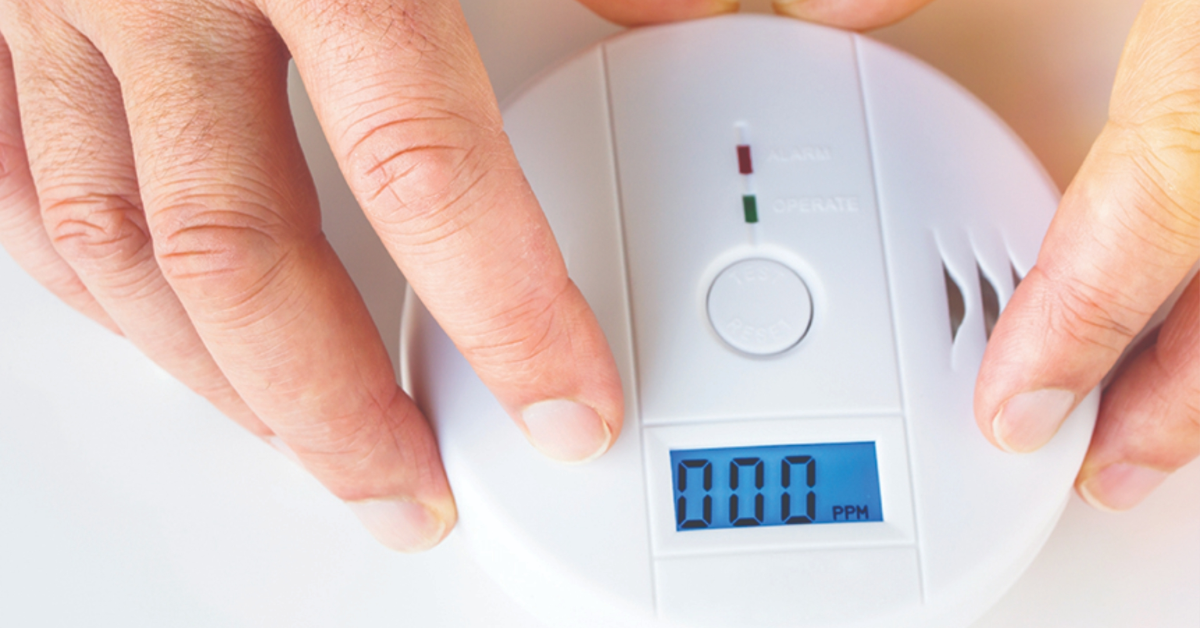The holidays often bring joyful moments, but they also remind us of the importance of keeping our families safe. Tragically, over the past few weeks, several headlines have reported deaths caused by carbon monoxide (CO) poisoning.
A family of four died while staying at their lake house in New Hampshire, and well-known model and actress Dayle Haddon also lost her life to CO in Pennsylvania.
These tragic incidents highlight the importance of having a carbon monoxide detector in your home, especially during the winter months when CO poisoning is more common. Every year, over 100,000 people are treated for CO poisoning in the emergency room, and more than 400 lives are lost.
What is Carbon Monoxide, and How Does it Affect You?
Carbon monoxide is a colorless, odorless gas that various household appliances can produce. If fuel-burning appliances, such as stoves, heaters, and grills, are not functioning properly, they can leak this deadly gas. Sources of CO include:
- Gas stoves
- Gas water heaters
- Space heaters
- Wood stoves and fireplaces
- Charcoal and gas grills
- Gas dryers
- Kerosene heaters
- Fuel-powered generators
“When appliances are not properly maintained or vented, the risk of CO buildup increases,” says Laureen Burton, a chemist with the EPA. CO is released when fuel doesn’t burn completely, leading to the dangerous accumulation of this gas indoors.
How to Prevent Carbon Monoxide Leaks in Your Home
While having a CO detector is crucial, prevention is equally important. Here are some essential steps you can take to reduce the risk of CO buildup in your home:

- Ensure proper ventilation: Always vent appliances like gas stoves and heaters to the outdoors.
- Check your fireplace: Always open the flue before using your fireplace and keep it open until the ashes cool down.
- Hire professionals: Regularly have heating systems like furnaces and chimneys inspected and cleaned by a trained professional.
- Avoid unvented appliances indoors: Do not use space heaters or fuel-burning appliances that do not have a vent to the outside.
- Avoid indoor grills and generators: Never use gas or charcoal grills indoors or run fuel-powered generators inside the house.
- Clear snow: After a snowstorm, make sure that your vehicle’s exhaust pipes and vents for your appliances are clear of snow.
The Importance of Carbon Monoxide Detectors
In addition to taking precautions to prevent CO buildup, it is crucial to have a carbon monoxide detector installed in your home. These devices work like smoke alarms, sounding an alert if dangerous levels of CO are present. According to a 2024 survey by the U.S. Consumer Product Safety Commission, 42% of homes do not have a CO detector, and 16% of homes with detectors have nonfunctional ones.
Here’s why CO detectors are essential:
- Alert you to danger: They can sense CO buildup before it reaches toxic levels, saving you from life-threatening situations.
- Meet safety standards: Look for detectors that are tested to UL2034, an international safety standard for CO alarms. This ensures that the alarm will alert you before CO levels become dangerous.
How to Choose the Right Carbon Monoxide Detector
When selecting a CO detector, you want to ensure it meets safety standards and is easy to use. Here’s what to look for:
- UL2034 Certification: Ensure the product is tested and meets the UL2034 safety standard. This ensures that it will sound an alarm before dangerous levels of CO are reached.
- Battery Backup: If you choose a plug-in alarm, ensure it has a battery backup. This is important in case of a power outage.
- Check the expiration date: CO detectors lose their effectiveness over time, so always check the manufacturer’s instructions for replacement guidelines.
Where to Install Carbon Monoxide Detectors
Correct placement of your CO detectors is key to their effectiveness. According to experts, you should install detectors in the following places:
- Outside each sleeping area: This ensures that you’ll hear the alarm if you’re in your room and not aware of the CO buildup.
- On every level of your home: Install detectors on all floors to ensure your whole house is protected.
- At eye level or higher: Since CO is slightly lighter than air, it rises toward the ceiling, making it most effective to place detectors higher up.
- Avoid obstructions: Make sure your detectors are not hidden behind furniture or curtains, as this could block the detection of CO.
Maintaining Your Carbon Monoxide Detectors
To keep your detectors working correctly, it’s essential to maintain them regularly. Here’s what you need to do:
- Check and change the batteries twice a year: Just like smoke detectors, you should change the batteries in your CO detector every six months.
- Test the detectors monthly: Make sure the detector is functioning correctly by testing it at least once a month.
- Replace detectors every 10 years: The sensors in your CO detectors lose sensitivity over time, so be sure to replace them according to the manufacturer’s guidelines.
Top-Rated Carbon Monoxide Detectors
If you’re unsure which CO detector to choose, here are a few highly-rated options to consider. They all meet the UL2034 safety standard, so you can rest assured they will provide reliable protection for you and your family.
Disclaimer: This article has been meticulously fact-checked by our team to ensure accuracy and uphold transparency. We strive to deliver trustworthy and dependable content to our readers.







Leave a Comment